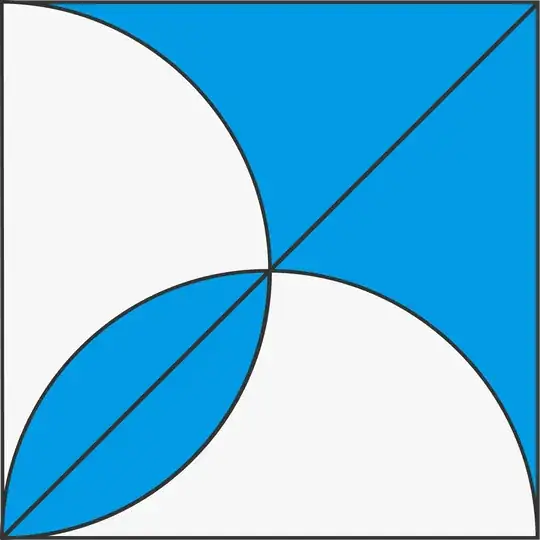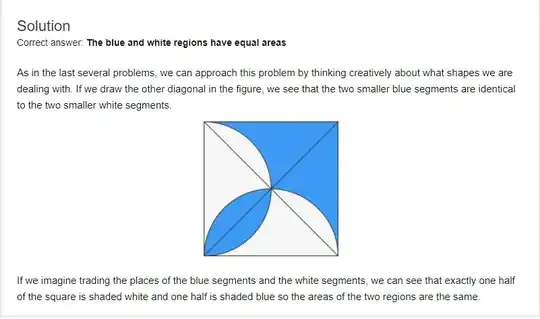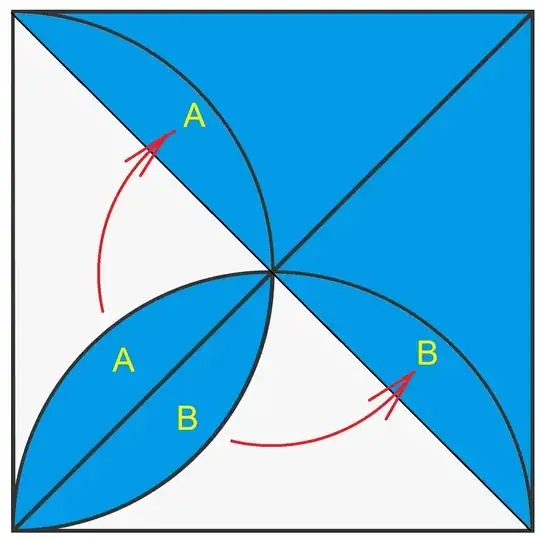In the square below, two semicircles are overlapping in a symmetrical pattern. Which is greater: the area shaded blue or the area shaded white?
My Solution
Let the length of each side of the square be $2r$.
The area of the square is $4r^2$.
The two semi-circles have equal area.
Area of one semi-circle = $\frac{{\pi}r^2}{2}$.
${\times}2 = {\pi}r^2$
White area = ${\pi}r^2 - $ area of the intersection of the two circles.
Let the area of the intersection of the two circles be $t$.
White area = ${\pi}r^2 - t$.
The segments that make up $t$ are identical.
$t$ = area of segment ${\times}2$.
Area of segment = Area of sector - Area of triangle.
Angle of sector = $90^{\circ}$ (The circles both have radius $r$, and the outer shape is a square.
Angle of sector $ = \frac{1}{4} * {\pi}r^2$.
Area of triangle $ = \frac{1}{2} * r^2$.
Area of segment $ = \frac{{\pi}r^2 - 2r^2}{4}$.
$t = 2 {\times} \frac{{\pi}r^2 - 2r^2}{4}$.
$t = \frac{{\pi}r^2 - 2r^2}{2}$.
White area $ = {\pi}r^2 - \frac{{\pi}r^2 - 2r^2}{2}$.
White area $ = \frac{2{\pi}r^2 - {\pi}r^2 + 2r^2}{2}$.
White area $ = \frac{{\pi}r^2 + 2r^2}{2}$.
Blue area = $r^2\left(4 - \frac{{\pi} + 2}{2}\right)$.
Blue area = $r^2\left(\frac{8 - ({\pi} + 2)}{2}\right)$.
Blue area = $r^2\left(\frac{6 - {\pi}}{2}\right)$.
If White area $-$ Blue area $ \gt 0$, then the White area is larger.
$$r^2\left(\frac{{\pi}+2 - (6 - {\pi}}{2}\right)$$
$$r^2\left(\frac{2{\pi} - 4}{2}\right)$$
$$r^2(\pi - 2)$$
$\therefore$ the white area is larger.
My answer was wrong.
What is the error in my solution?
The provided solution:


